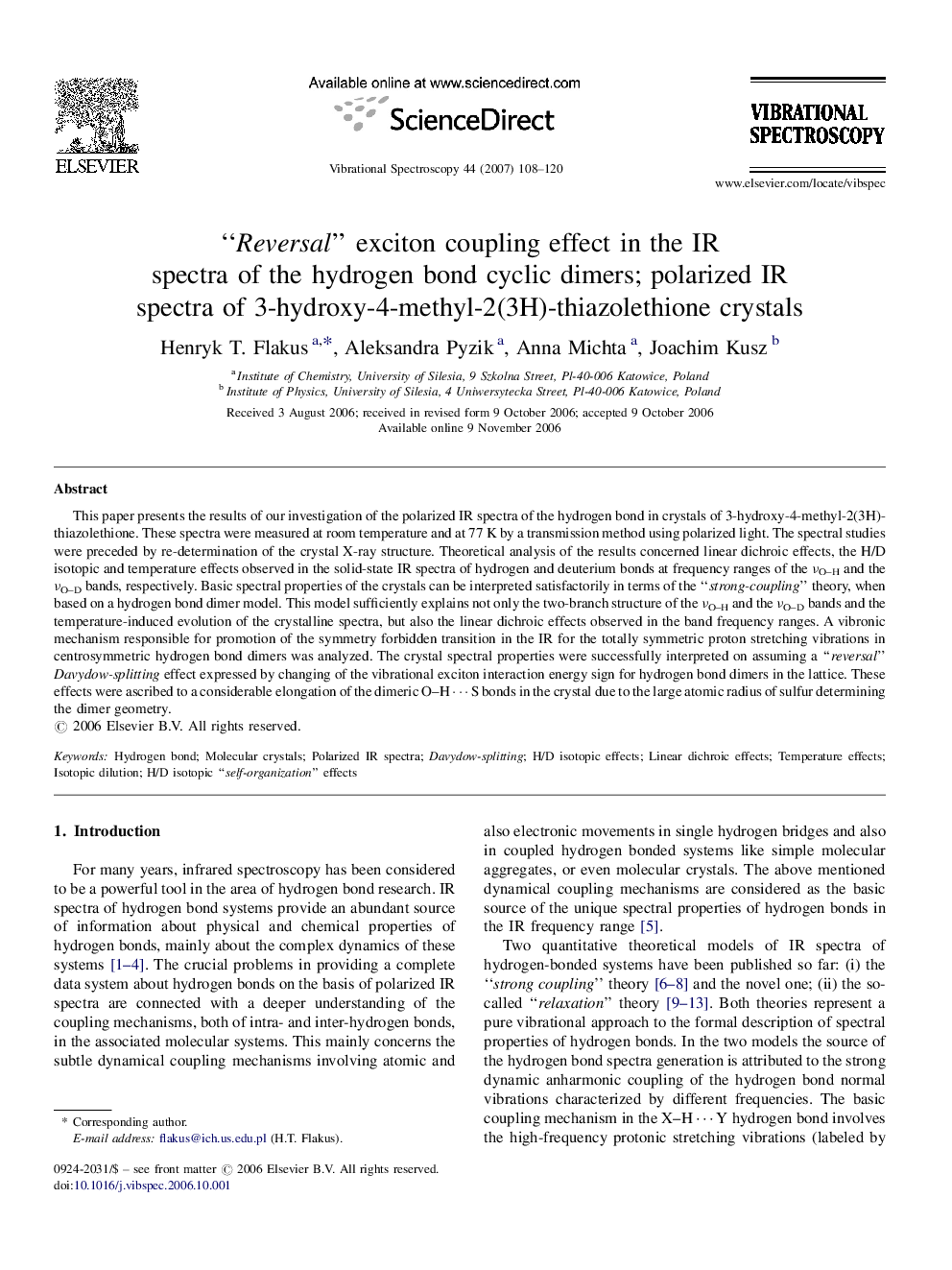| Article ID | Journal | Published Year | Pages | File Type |
|---|---|---|---|---|
| 1250988 | Vibrational Spectroscopy | 2007 | 13 Pages |
Abstract
This paper presents the results of our investigation of the polarized IR spectra of the hydrogen bond in crystals of 3-hydroxy-4-methyl-2(3H)-thiazolethione. These spectra were measured at room temperature and at 77 K by a transmission method using polarized light. The spectral studies were preceded by re-determination of the crystal X-ray structure. Theoretical analysis of the results concerned linear dichroic effects, the H/D isotopic and temperature effects observed in the solid-state IR spectra of hydrogen and deuterium bonds at frequency ranges of the νOH and the νOD bands, respectively. Basic spectral properties of the crystals can be interpreted satisfactorily in terms of the “strong-coupling” theory, when based on a hydrogen bond dimer model. This model sufficiently explains not only the two-branch structure of the νOH and the νOD bands and the temperature-induced evolution of the crystalline spectra, but also the linear dichroic effects observed in the band frequency ranges. A vibronic mechanism responsible for promotion of the symmetry forbidden transition in the IR for the totally symmetric proton stretching vibrations in centrosymmetric hydrogen bond dimers was analyzed. The crystal spectral properties were successfully interpreted on assuming a “reversal” Davydow-splitting effect expressed by changing of the vibrational exciton interaction energy sign for hydrogen bond dimers in the lattice. These effects were ascribed to a considerable elongation of the dimeric OHâ¯S bonds in the crystal due to the large atomic radius of sulfur determining the dimer geometry.
Keywords
Related Topics
Physical Sciences and Engineering
Chemistry
Analytical Chemistry
Authors
Henryk T. Flakus, Aleksandra Pyzik, Anna Michta, Joachim Kusz,
